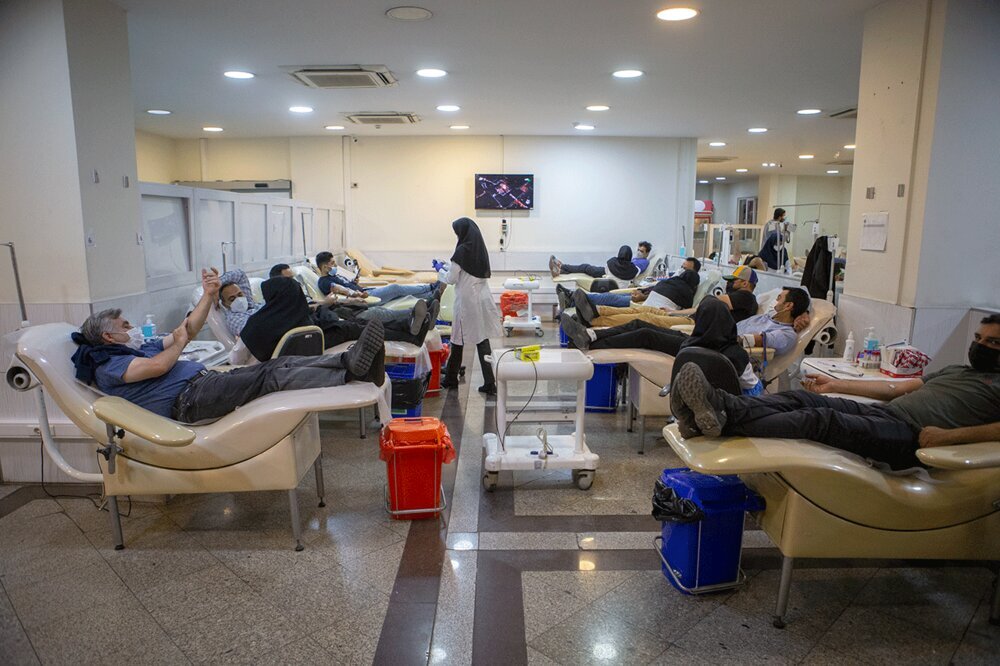Give blood, give plasma, share life, share often

June 14 is World Blood Donor Day. Every year countries around the world celebrate World Blood Donor Day. The event serves to raise awareness of the need for safe blood and blood products and to thank voluntary, unpaid blood donors for their life-saving gifts of blood.
A blood service that gives patients access to safe blood and blood products in sufficient quantity is a key component of an effective health system. The global theme of World Blood Donor Day changes each year in recognition of the selfless individuals who donate their blood to people unknown to them.
The slogan for the 2023 World Blood Donor Day campaign is “Give blood, give plasma, share life, share often.”
It focuses on patients requiring life-long transfusion support and underlines the role every single person can play, by giving the valuable gift of blood or plasma.
It also highlights the importance of giving blood or plasma regularly to create a safe and sustainable supply of blood and blood products that can be always available, all over the world, so that all patients in need can receive timely treatment.
The objectives are to celebrate and thank individuals who donate blood and encourage more people to become new donors and encourage people in good health to donate blood regularly, as often as is safe and possible, to transform the quality of life for transfusion-dependent patients and help to build a secure blood supply in all countries in the world.
The occasion also highlights the critical roles of voluntary non-remunerated regular blood and plasma donations in achieving universal access to safe blood products for all populations and mobilizes support at national, regional, and global levels among governments and development partners to invest in, strengthen and sustain national blood programs.
Activities that would help promote the slogan of this year’s World Blood Donor Day may include donor appreciation ceremonies, social networking campaigns, special media broadcasts, social media posts featuring individual blood donors with the slogan, meetings and workshops, musical and artistic events to thank blood donors, and coloring the iconic monuments red or yellow. Countries are encouraged to disseminate to various media outlets stories of people, in particular transfusion-dependent patients, whose lives have been saved through blood or plasma donation as a way of motivating blood and plasma donation.
Blood donation in Iran
The average blood donation rate in Iran is 26 per thousand people which places the country in a good situation among other countries.
According to the World Health Organization, the median blood donation rate in high-income countries is 31.5 donations per 1000 people. This compares with 16.4 donations per 1000 people in upper-middle-income countries, 6.6 donations per 1000 people in lower-middle-income countries, and 5.0 donations per 1000 people in low-income countries.
Of the 118.5 million blood donations collected globally, 40% of these are collected in high-income countries, home to 16% of the world’s population.
In low-income countries, up to 54 % of blood transfusions are given to children under 5 years of age; whereas in high-income countries, the most frequently transfused patient group is over 60 years of age, accounting for up to 76% of all transfusions.
Based on samples of 1000 people, the blood donation rate is 31.5 donations in high-income countries, 16.4 donations in upper-middle-income countries, 6.6 donations in lower-middle-income countries, and 5.0 donations in low-income countries.
An increase of 10.7 million blood donations from voluntary unpaid donors has been reported from 2008 to 2018. In total, 79 countries collect over 90% of their blood supply from voluntary unpaid blood donors; however, 54 countries collect more than 50% of their blood supply from family/replacement or paid donors.
Blood transfusion saves lives and improves health, but many patients requiring transfusion do not have timely access to safe blood. Providing safe and adequate blood should be an integral part of every country’s national health care policy and infrastructure.
WHO recommends that all activities related to blood collection, testing, processing, storage, and distribution be coordinated at the national level through effective organization and integrated blood supply networks. The national blood system should be governed by national blood policy and legislative framework to promote the uniform implementation of standards and consistency in the quality and safety of blood and blood products.
Of the 118.5 million blood donations collected globally, 40% of these are collected in high-income countries, home to 16% of the world’s population.
Only 56 of 171 reporting countries produce plasma-derived medicinal products (PDMP) through the fractionation of plasma collected in the reporting countries. A total of 91 countries reported that all PDMPs are imported, 16 countries reported that no PDMP was used during the reporting period, and 8 countries did not respond to the question.
In the past Iranian calendar year, which ended on March 20, some 2.223 million blood donations were registered across the country, an increase of 9.3 percent compared to the year before.
